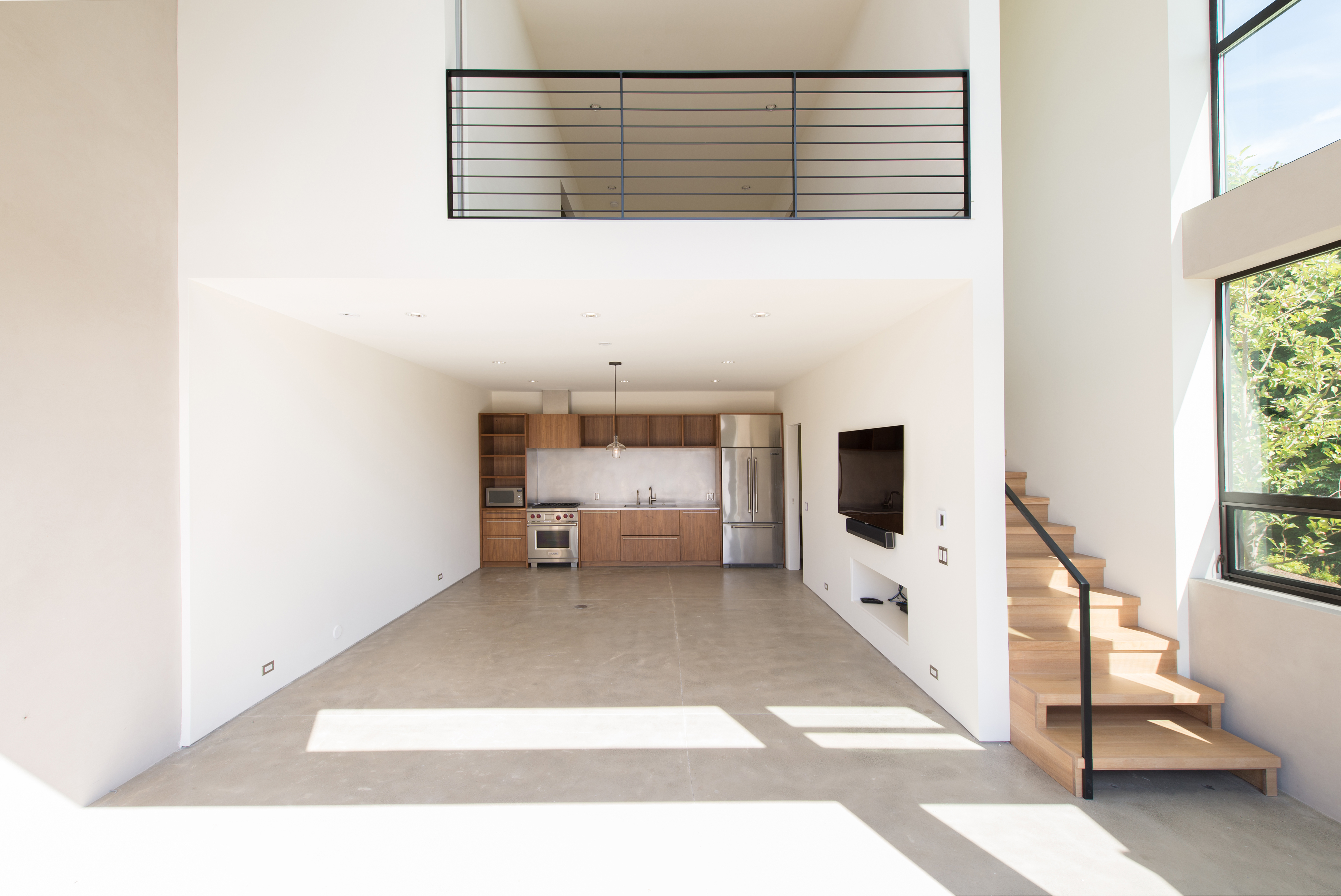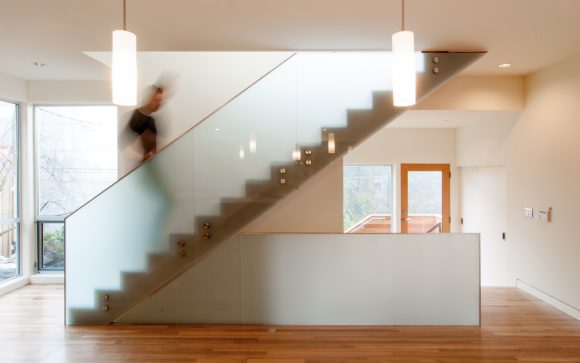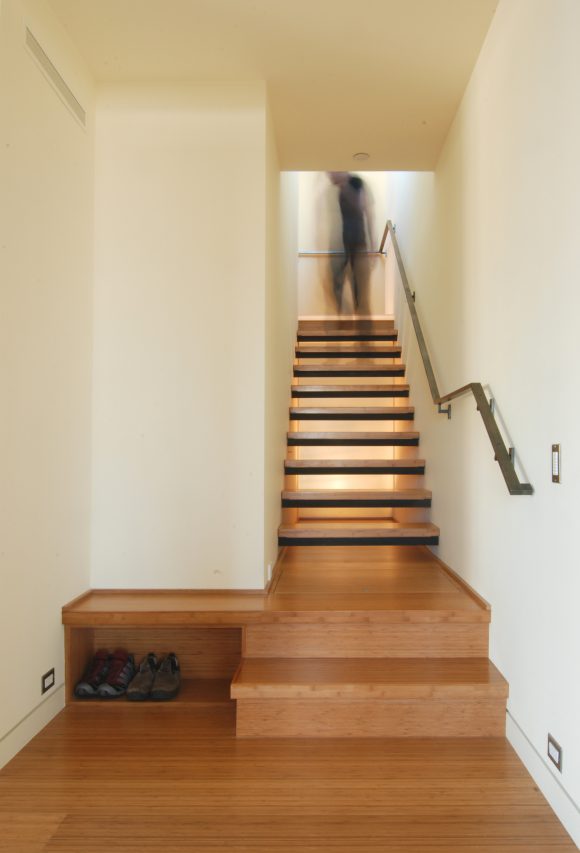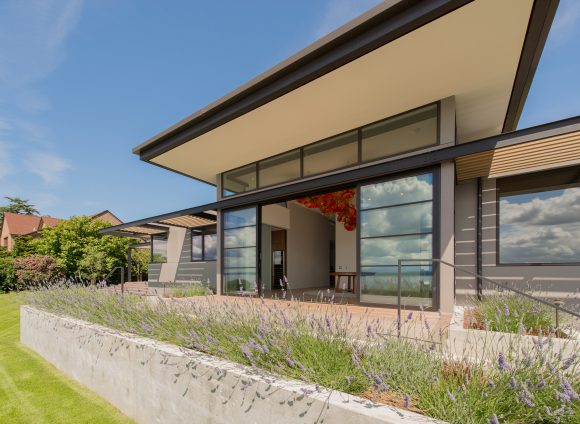
[Images by BUILD LLC]
Life safety is one of the greatest drivers of the building codes that govern our built environment. Ask any architect or designer about the chapters they reference most in the building code and their list will undeniably include the section on egress. One of the most important sections on egress covers the requirements for guardrails (R312 in the residential code and 1013 in the building code). While the guardrail codes aren’t necessarily complicated or lengthy, they are some of the most applied provisions in architecture. Here’s a quick example of where guardrails are required as per the 2012 International Residential Code:
“Guards shall be located along open-sided walking surfaces, including stairs, ramps and landings, that are located more than 30 inches measured vertically to the floor or grade below at any point within 36 inches horizontally to the edge of the open side.”
Direct examples of this particular code can be found just about anywhere in the built environment, from an open staircase on a single family residence to accessible ramps at the airport. Most applications also apply this code conservatively, meaning that the guardrail runs from the bottom of a ramp or stairway to the top. There’s nothing wrong with using a very direct and conservative interpretation of the guardrail code, in fact we do it all the time. The example below from our Madison Park Residence shows a simple glass guardrail extending from the main floor to the upper floor.

Most architects will point out, however, that a careful read of the building code uncovers nuances that can lead to more design possibilities. Understanding that guardrails aren’t required until the walking surface exceeds 30 inches in height is key. We often use this provision to produce a variety of different design results. The example from the Case Study House 2014 (below) pulls the guardrail up the stairs to the point at which the steps are 30 inches or greater in height.

In other projects, like the Magnolia Guest House, (below,) the bottom two treads are pushed out beyond the stair wall.

Note that per the building code, the handrail is still required to continue down to the floor level, which, in our opinion, produces its own dynamic and aesthetically pleasing result. The Lake Washington Residence (below) creates a sculptural feature out of the “floating” handrail which continues down and around the stair wall.

On projects that have more area adjacent the stairs, terraces can help mediate the height difference between the ground level and the stairs. In the Case Study House 2014, concrete and ipe stepped terraces less than 30 inches follow the stairs up to the entry and eliminate the need for guardrails.

A similar strategy is used in the Society Consulting headquarters where a series of bleachers follow the stairs. Note that the commercial code requires handrails on both sides of a stair.

At the Concord Penthouse the second tread is pulled across a small vestibule to become a built-in bench and shoe cubby.

The second part of the guardrail code quoted above is equally important. It basically states that guardrails are only required if the walking surface is 36 inches or closer to the edge of the open side. Using this provision thoughtfully can be especially helpful at conditions where a guardrail would produce visual clutter or get in the way of an important view. The Magnolia House example below does just this. By integrating deep planter boxes around the terrace space, the guardrails are no longer required as the depth of the vegetation acts as the barrier. This was an important design maneuver to include on this project as the terrace and dining room in the background enjoy stunning views of the Puget Sound and Olympic Mountains.

Another method for removing guardrails altogether while meeting the code and maintaining the life safety of a design can be found in section R312.1.3 of the International Residential Code. It states:
“Required guards shall not have openings from the walking surface to the required guard height which allow passage of a sphere 4 inches in diameter.”
This provision allows some nice design possibilities, and the Lake Washington Residence below maintains a gap between the stair and window less than 4 inches to eliminate the guardrail and allow the stair to gracefully run alongside the glazing.

When the building code is thoughtfully interpreted, a diverse set of solutions can stem from just a few simple code provisions. Guardrails are an excellent example of how architects and designers can apply critical thinking to the building code and achieve a wealth of aesthetically pleasing and perfectly sensible results.

Cheers from Team BUILD





